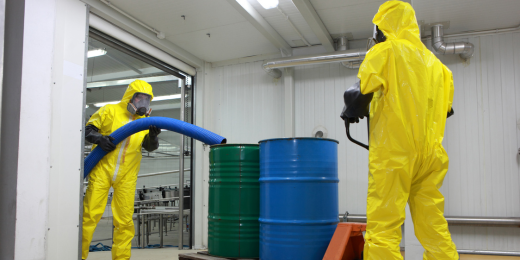Some Known Incorrect Statements About Reclaim Waste
Table of ContentsAbout Reclaim WasteReclaim Waste Things To Know Before You Get ThisThe smart Trick of Reclaim Waste That Nobody is DiscussingAll About Reclaim WasteThe 9-Second Trick For Reclaim Waste
Residential sewage waste refers to the waste and products from a household septic storage tank. The correct management and disposal of residential sewage waste need fluid waste to be transferred to a sewer therapy plant where the proper techniques and tools are applied to cleanse and dispose of waste.
Commercial waste typically consists of potential dangers, such as combustible products or a mix of fluid and solid waste products, and needs an extra advanced and thorough disposal process. The disposal of commercial waste typically includes the purification of waste before transport to ensure secure and proper disposal. Hazardous waste is created from results and drainage of industrial processes and manufacturing.
This kind of waste can not utilize the very same sewer management transport or procedures as septic or commercial fluids. The commercial waste management procedure calls for the evaluation and screening of liquid waste before it undertakes the disposal procedure (liquid waste removal). Runoff waste is the fluid waste that comes from overflow and excess stormwater in highly populated areas or cities
Runoff waste can cause contamination and flooding if not dealt with correctly. Ensuring appropriate waste management can avoid disasters and minimize ecological injury.
Reclaim Waste for Dummies
Get in touch with PROS Solutions today to discover about our waste management and disposal solutions and the appropriate ways to care for the liquid waste you create.
Do you know what occurs to your water when you end, purge the toilet or drain pipes the washing machine? No? Well, it's worth knowing. This supposed 'wastewater' is not only a vital source however, after therapy, will be launched to our land, waterways or the ocean. Used water from toilets, showers, baths, cooking area sinks, washings and industrial procedures is called wastewater.

water made use of to cool equipment or tidy plant and tools). Stormwater, a kind of wastewater, is runoff that flows from farming and metropolitan locations such as roof coverings, parks, gardens, roads, courses and seamless gutters right into stormwater drains, after rain. Stormwater streams unattended directly to local creeks or rivers, ultimately getting to the ocean.
How Reclaim Waste can Save You Time, Stress, and Money.
In Queensland, many wastewater is treated at sewer therapy plants. Wastewater is delivered from domestic or commercial websites via a system of sewers and pump terminals, known as sewerage reticulation, to a sewer therapy plant.
The Department of Natural Resources recommends city governments concerning managing, operating and maintaining sewerage systems and therapy plants. In unsewered locations, local federal governments might require owners to install specific or family sewage treatment systems to treat residential wastewater from toilets, cooking areas, restrooms and washings. The Division of Natural Resources authorizes using household systems when they are proven to be efficient.
In some new class, treatment of some stormwater to remove trash, sand and crushed rock has started using gross pollutant catches. Wastewater treatment occurs in 4 phases: Eliminates strong issue.
Makes use of small living organisms knows as micro-organisms to break down and get rid of staying liquified wastes and great fragments. Micro-organisms and wastes are included in the sludge.
Rumored Buzz on Reclaim Waste
Nutrient elimination is not offered at all sewage therapy plants because it requires expensive specialist devices. Clear liquid effluent generated after treatment might still contain disease-causing micro-organisms - liquid waste disposal.

Many wastewater streams into the sewerage system. Under the Act, neighborhood federal governments provide authorizations and permits for ecologically relevant tasks (Ages) including wastewater launches that could have a local effect.
Little Known Questions About Reclaim Waste.
Otherwise, examples are considered research laboratory evaluation. Typically several examinations are required to establish the degrees of each of the various pollutants such as oils, heavy steels and pesticides in water. Tracking offers accurate information regarding water top quality and can verify that permit conditions are being satisfied. The details gotten with surveillance gives the basis for making water web high quality decisions.
Comments on “The 10-Minute Rule for Reclaim Waste”